Xianren Wu
Talent Search and Recommendation Systems at LinkedIn: Practical Challenges and Lessons Learned
Sep 18, 2018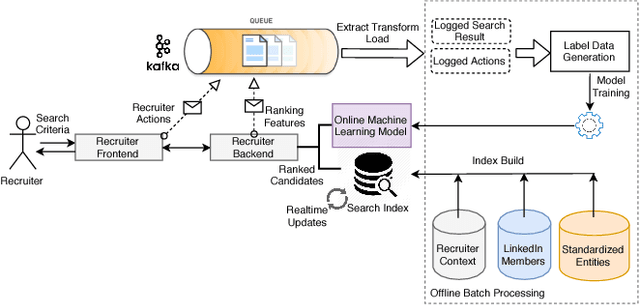
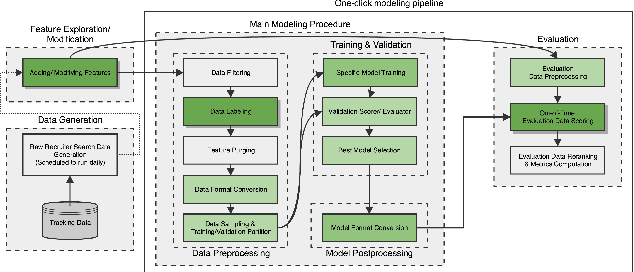
Abstract:LinkedIn Talent Solutions business contributes to around 65% of LinkedIn's annual revenue, and provides tools for job providers to reach out to potential candidates and for job seekers to find suitable career opportunities. LinkedIn's job ecosystem has been designed as a platform to connect job providers and job seekers, and to serve as a marketplace for efficient matching between potential candidates and job openings. A key mechanism to help achieve these goals is the LinkedIn Recruiter product, which enables recruiters to search for relevant candidates and obtain candidate recommendations for their job postings. In this work, we highlight a set of unique information retrieval, system, and modeling challenges associated with talent search and recommendation systems.
Towards Deep and Representation Learning for Talent Search at LinkedIn
Sep 17, 2018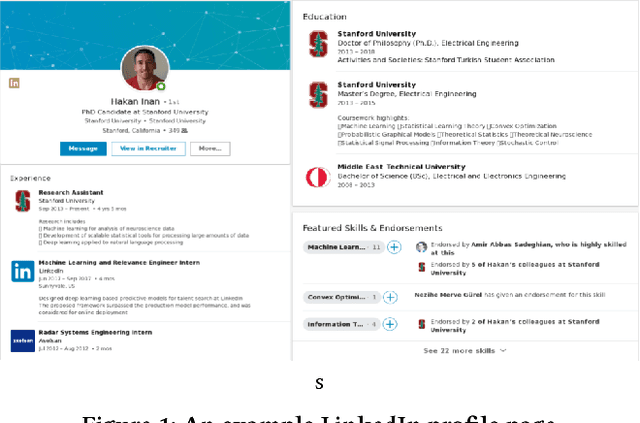

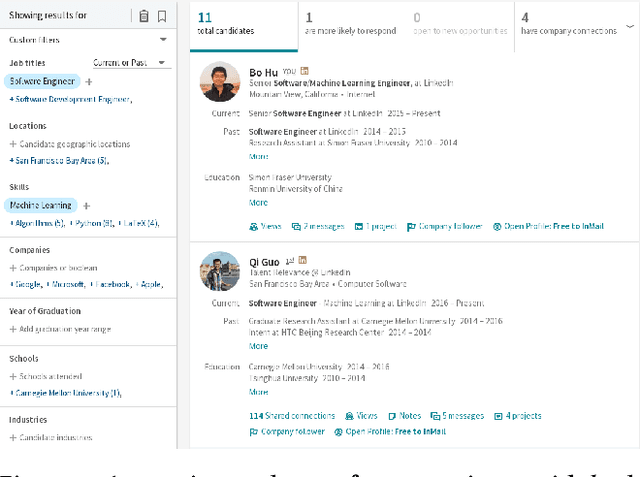
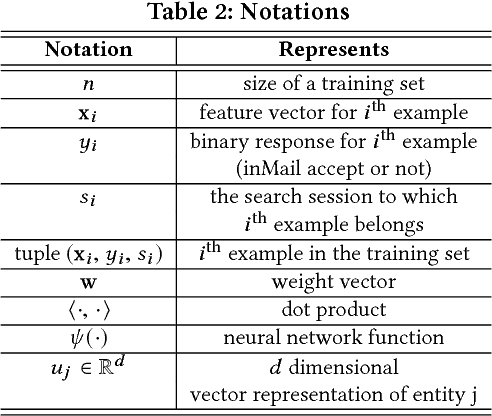
Abstract:Talent search and recommendation systems at LinkedIn strive to match the potential candidates to the hiring needs of a recruiter or a hiring manager expressed in terms of a search query or a job posting. Recent work in this domain has mainly focused on linear models, which do not take complex relationships between features into account, as well as ensemble tree models, which introduce non-linearity but are still insufficient for exploring all the potential feature interactions, and strictly separate feature generation from modeling. In this paper, we present the results of our application of deep and representation learning models on LinkedIn Recruiter. Our key contributions include: (i) Learning semantic representations of sparse entities within the talent search domain, such as recruiter ids, candidate ids, and skill entity ids, for which we utilize neural network models that take advantage of LinkedIn Economic Graph, and (ii) Deep models for learning recruiter engagement and candidate response in talent search applications. We also explore learning to rank approaches applied to deep models, and show the benefits for the talent search use case. Finally, we present offline and online evaluation results for LinkedIn talent search and recommendation systems, and discuss potential challenges along the path to a fully deep model architecture. The challenges and approaches discussed generalize to any multi-faceted search engine.
Search by Ideal Candidates: Next Generation of Talent Search at LinkedIn
Feb 26, 2016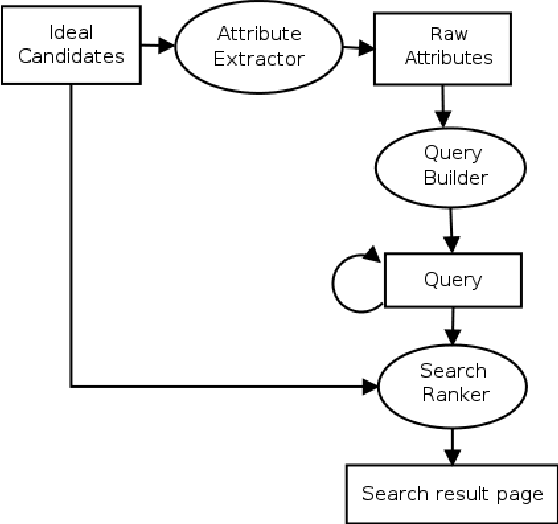
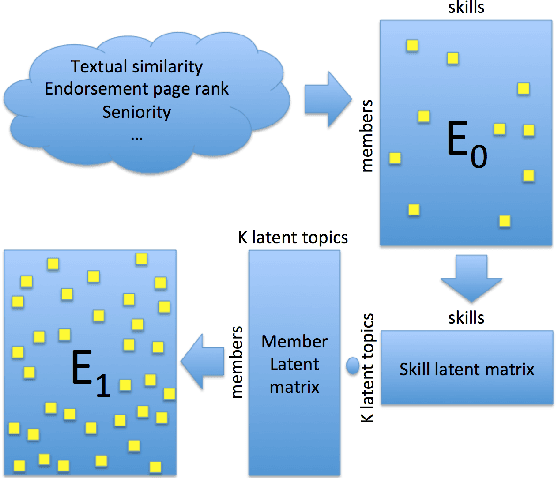
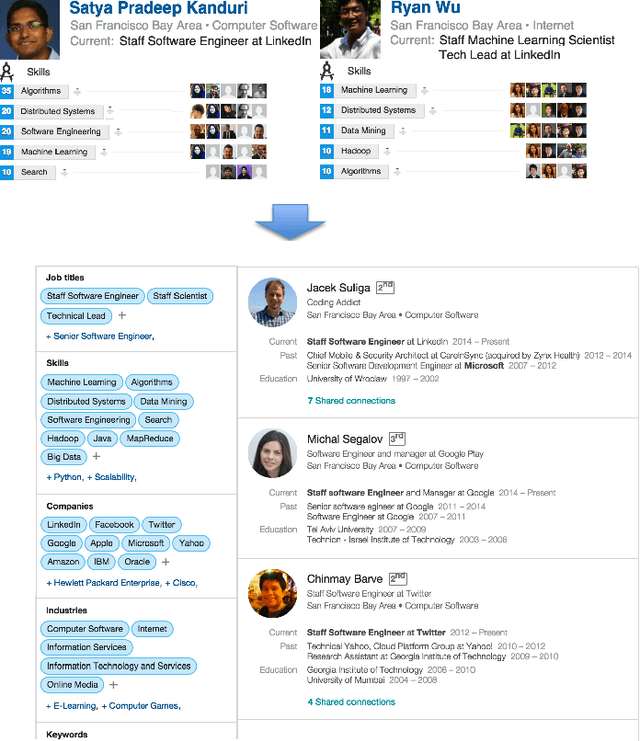
Abstract:One key challenge in talent search is how to translate complex criteria of a hiring position into a search query. This typically requires deep knowledge on which skills are typically needed for the position, what are their alternatives, which companies are likely to have such candidates, etc. However, listing examples of suitable candidates for a given position is a relatively easy job. Therefore, in order to help searchers overcome this challenge, we design a next generation of talent search paradigm at LinkedIn: Search by Ideal Candidates. This new system only needs the searcher to input one or several examples of suitable candidates for the position. The system will generate a query based on the input candidates and then retrieve and rank results based on the query as well as the input candidates. The query is also shown to the searcher to make the system transparent and to allow the searcher to interact with it. As the searcher modifies the initial query and makes it deviate from the ideal candidates, the search ranking function dynamically adjusts an refreshes the ranking results balancing between the roles of query and ideal candidates. As of writing this paper, the new system is being launched to our customers.
 Add to Chrome
Add to Chrome Add to Firefox
Add to Firefox Add to Edge
Add to Edge